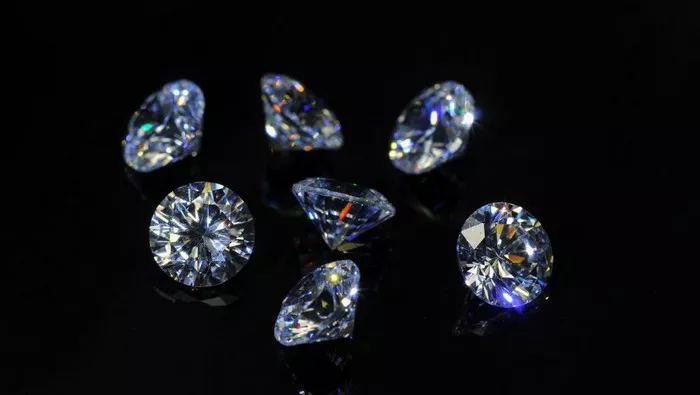Cubic zirconia (CZ) has captivated jewelry enthusiasts and gemstone aficionados alike with its striking resemblance to diamonds. Often used as a more affordable alternative to the latter, cubic zirconia boasts a rich history that spans several decades. In exploring its origins, technological advancements, and cultural impact, we uncover a gemstone that has revolutionized the jewelry industry.
The Emergence of Cubic Zirconia: Origins and Early Development
The story of cubic zirconia begins in the late 19th century with the discovery of zirconium oxide (ZrO2), the mineral form of cubic zirconia. However, its potential as a diamond simulant was not realized until much later. In 1937, German mineralogists identified cubic zirconia as a naturally occurring mineral, but it wasn’t until the 1970s that the synthetic form gained prominence.
The Birth of Synthetic Cubic Zirconia
In 1973, Soviet scientists at the Lebedev Physical Institute in Moscow successfully synthesized cubic zirconia for the first time. This marked a significant breakthrough in gemstone synthesis technology. The synthetic version of cubic zirconia offered several advantages over natural diamonds and other gemstones, primarily in terms of cost-effectiveness and availability.
Technological Advancements in Cubic Zirconia Production
The Czochralski Process
One of the pivotal advancements in cubic zirconia production came with the adaptation of the Czochralski process. Originally developed for growing semiconductor crystals, this method allowed for the creation of large, high-quality cubic zirconia crystals with minimal defects. This breakthrough significantly enhanced the gemstone’s optical properties, making it an even more convincing diamond simulant.
Advances in Cutting and Polishing Techniques
As demand for cubic zirconia grew, so did the need for improved cutting and polishing techniques. Manufacturers developed specialized tools and methodologies to achieve the brilliant facets and sparkle that are characteristic of diamonds. These advancements not only enhanced the aesthetic appeal of cubic zirconia but also contributed to its widespread acceptance in the jewelry market.
Cubic Zirconia in the Jewelry Industry: Cultural and Economic Impact
The Rise of CZ in Fashion Jewelry
During the late 20th and early 21st centuries, cubic zirconia gained popularity as a versatile gemstone for fashion jewelry. Its affordability allowed jewelry designers to create intricate and elaborate pieces that appealed to a broader audience. CZ became synonymous with elegance and sophistication, offering consumers an accessible way to enjoy the luxury of sparkling gemstones.
Ethical Considerations and Sustainability
Unlike natural diamonds, which often face scrutiny regarding ethical mining practices, cubic zirconia is synthetically produced under controlled laboratory conditions. This aspect has made CZ an attractive choice for consumers who prioritize ethical considerations in their purchasing decisions. Additionally, the environmental impact of cubic zirconia production is generally lower compared to mining natural diamonds, further enhancing its appeal from a sustainability perspective.
Cubic Zirconia vs. Natural Diamonds: Debunking Myths and Clarifying Differences
Optical Properties and Physical Characteristics
While cubic zirconia shares many optical properties with diamonds, including brilliance and clarity, there are distinct differences that gemologists and jewelry experts use to differentiate between the two. These differences include refractive index, hardness, and thermal conductivity, which contribute to the unique allure of both gemstones.
See Also: Which Color Pearl is Most Expensive: Things You Need To Know
Market Positioning and Consumer Perception
The relationship between cubic zirconia and natural diamonds is complex, shaped by factors such as affordability, durability, and cultural perceptions of luxury. While natural diamonds hold a timeless allure rooted in tradition and rarity, cubic zirconia appeals to consumers seeking an affordable alternative without compromising on aesthetic appeal. Understanding these distinctions is crucial for both consumers and industry professionals navigating the diverse landscape of gemstone jewelry.
The Future of Cubic Zirconia: Innovations and Trends
Advances in Synthetic Gemstone Technology
As technology continues to evolve, so too does the potential for innovations in cubic zirconia production. Emerging techniques in materials science and nanotechnology may pave the way for enhanced versions of CZ with superior optical properties and durability. These advancements could further blur the distinction between cubic zirconia and natural diamonds, offering consumers even more choices in the jewelry market.
Sustainable Practices and Consumer Awareness
With increasing awareness of sustainability issues, the jewelry industry is likely to see a greater emphasis on ethical sourcing and manufacturing practices. Cubic zirconia, already positioned as a sustainable alternative to natural diamonds, stands to benefit from this shift in consumer preferences. Manufacturers and retailers who embrace transparent practices and eco-friendly initiatives may find themselves at the forefront of a growing market segment.
Conclusion
In conclusion, the journey of cubic zirconia from its humble beginnings to its current status as a beloved gemstone in the jewelry industry is a testament to human ingenuity and technological advancement. Whether adorning a statement necklace or gracing an engagement ring, cubic zirconia continues to captivate hearts with its brilliance and affordability. As we look to the future, one thing remains clear: the allure of cubic zirconia as a symbol of elegance and style is here to stay.
Through its history, technological evolution, and cultural impact, cubic zirconia has transcended its origins to become a timeless icon in the world of gemstones and jewelry.

